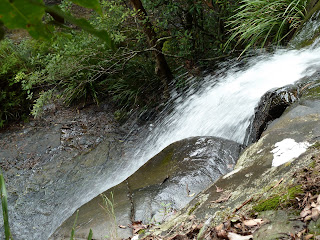I avoided Charles and Diana's nuptials by going on holiday to France. I got some strange looks from the locals when I explained why I wasn't dashing back across the Channel on the day, but they of all our Euromates should have understood why I was fleeing the frenzy; they who revolted in order to abolish privilege.
When my friend – who, thankfully, shares my opinion – and I were totting up the pros and cons of coming to live in Australia for a while, the prospect of both a Tory government and a royal wedding seemed like a good reason to leave the UK. I thought the other side of the planet would be far enough away; I thought a majority of Australians must be closet republicans at the very least. But I was wrong.
There are just as many mugs and plates and eggcups and bells and flags and balloons and bunting and dolls and T-shirts and tiaras and hats and column inches and speculation and anticipation and deference and cap-doffing as there are back home. There are squeals of delight from female presenters on local radio and endless previews of the upcoming TV coverage. Callers to phone-ins proudly list their collections of memorabilia.
Where can I seek sanctuary on Saturday? I won't even be able to turn on my computer.
I abhor privilege. And not even home-grown privilege at that. Their home may be an English castle; they may have changed their name to Windsor or Wales or Wotnot; and they may talk with a peculiar plummy accent quite unlike anyone else's (well, except the current Archbishop of Canterbury's perhaps), but the royals' ancestral roots are no more English than Angela Merkel's.
I'm sure William and Catherine (now she's über-posh) are 'a nice couple', and the occasion will brighten the day for millions wading through economic gloom, and I'm glad about both those things. I doubt, however, that the royal wedding – there, I said it – will promote the UK across the globe as anything other than a quirky little kingdom, or that it will improve tourist takings.
The monarchy has no relevance to issues of human rights, democratic governance, poverty, climate change, the protection of ecosystems, equal opportunities, secularism or the avoidance of conflict.
To sum up what I dislike most about it, however, I quote from The Independent the other day. 'St James's Palace', which of course is a building and not a person and therefore cannot speak, responded to criticism of the queen inviting royal dictators (from Bahrain, Swaziland and Saudi Arabia) to the wedding:
'Invitations are extended from the Queen following the long-held tradition of inviting other crowned heads of state; we have taken advice from the Foreign Office about their continued inclusion.'
Oh, that's all right, then.
And, defending the fact that former Labour prime ministers Tony Blair and Gordon Brown have not received invitations, 'the palace' explained that, unlike Sir John Major and Baroness Thatcher, they are not Knights of the Garter.
I rest my case.
















































